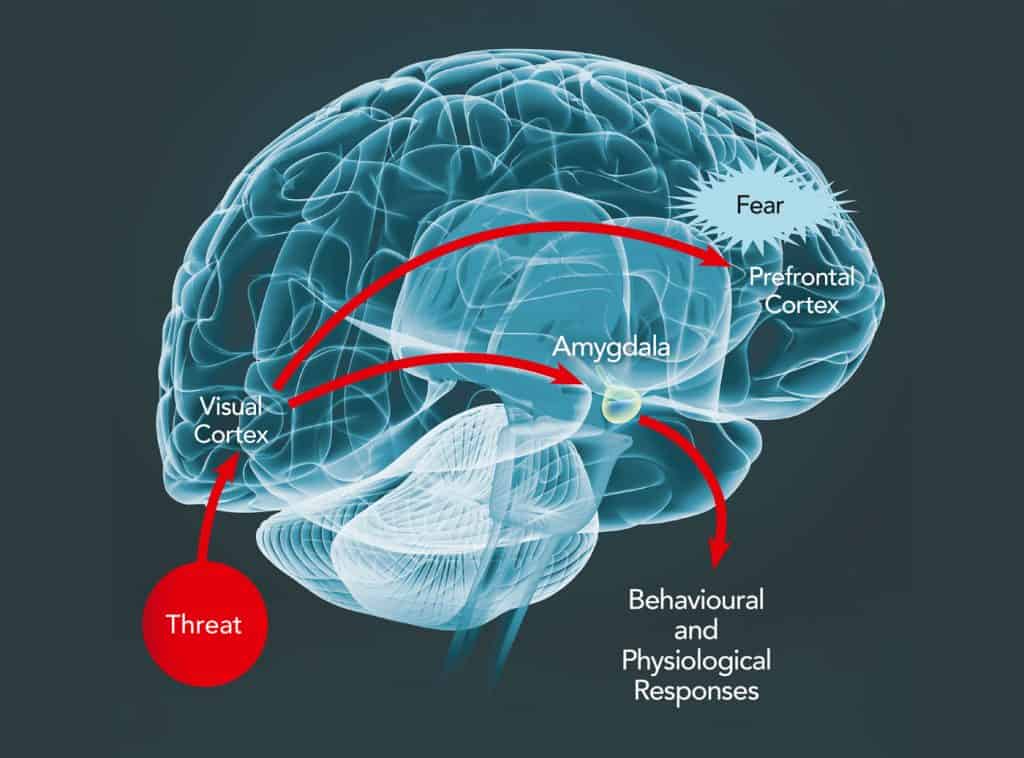
Anxiety disorders affect 1 in 4 people, making them one of the most common mental health conditions in the world. But despite its prevalence, for most patients, existing treatments provide limited relief, leaving them searching for new options.
But now, a team of researchers at the Universities of Bristol and Exeter has made an exciting discovery that could lead to more effective treatments for anxiety disorders.
The research reveals the discovery of a gene in the brain that regulates anxiety symptoms. Crucially, the scientists found that modifying the expression of this gene can reduce anxiety levels, which could open up a new avenue for drug development.
Pinpointing the molecular events that lead to anxiety
Anxiety is classically thought to be concerned with the perceived threat of danger. For most of human history, people suffered from near-constant anxiety due to immediate dangers such as lack of food and shelter, predators, and violence at the hands of other humans. In our modern society, however, the specter of anxiety is, for the most part, due to perceived delayed danger.
Am I going to get fired? Am I ready to become a parent? What am I doing with my life? These are common worries that people in modern society suffer from, fueling existential angst.
Anxiety exists for a reason. It is a safety switch in the human brain’s mental toolkit that protects the individual from danger. For instance, the anxious avoidance of snakes and spiders has surely saved countless lives. However, there is no built-in anxiety towards cars and electrical sockets, which seems to indicate that evolution hasn’t caught up to these dangers yet.
Nevertheless, whether you’re anxious about lions stalking you on the savannah or about having to do public speaking, the feelings are comparable due to the way anxiety is processed in the brain.

Once the amygdala — a neural network in the limbic system involved in the flight or fight response — flags incoming information as a threat (real or imagined), it will send a distress signal notifying other parts of the brain to prepare for defensive action, overriding the prefrontal cortex (the part of your brain responsible for higher-level thinking and decision making).
Subsequently, the heart rate increases, blood pressure rises, breathing quickens, and the brainstem switches on, priming you into a state of high alertness and hypervigilance. It really is as if your very life is at stake, even though in practical terms the worst that might happen is some people might laugh at your poorly delivered presentation only to forget about it by lunchtime.
Anxiety is part of the human experience and it is a hardwired evolutionary response that we’ve inherited from our ancestors that lived hundreds of millions of years ago. But when anxiety is a fact of everyday life, that’s when it has become a chronic disorder.
Severe psychological trauma is a well-known trigger that causes changes in the neurons in the brain’s amygdala. This can lead to a range of anxiety disorders, including panic attacks and post-traumatic stress disorder.
Yet, despite the prevalence of anxiety disorders, current anti-anxiety drugs have limited efficacy, with more than half of patients not achieving remission following treatment.
The lack of potent anxiolytic (anti-anxiety) drugs has been pinned on our poor understanding of the neural circuits underlying anxiety and molecular events resulting in stress-related neuropsychiatric states. But this is where the new study comes in.
A molecular brake for anxiety
In this study, the researchers sought to identify the molecular events in the brain that underpin anxiety. They focused on a group of molecules called microRNAs (miRNAs), which regulate gene expression and multiple target proteins that control cellular processes in the amygdala.
Following acute stress, the team found an increased amount of one type of molecule, called miR483-5p, in a mouse amygdala. This molecule suppressed the expression of a gene called Pgap2, which drives changes in the neuronal morphology of the brain and in behavior associated with anxiety.
The scientists discovered that miR-483-5p acts as a molecular brake that offsets stress-induced amygdala changes and promotes anxiety relief.
Even though feeling anxiety is important because its primary role is to keep you away from danger, the brain seems to have a safety switch in the form of this molecule to prevent us from falling too much into anxiety. It’s an offramp out of the loop of anxiety, so we might go on with our lives.
Now, the thinking is that scientists could supercharge this molecule in a new therapy that enhances this pathway, thereby relieving anxiety disorders.
“Stress can trigger the onset of a number of neuropsychiatric conditions that have their roots in an adverse combination of genetic and environmental factors. While low levels of stress are counterbalanced by the natural capacity of the brain to adjust, severe or prolonged traumatic experiences can overcome the protective mechanisms of stress resilience, leading to the development of pathological conditions such as depression or anxiety,” said Dr. Valentina Mosienko, one of the study’s lead authors and an MRC Fellow and Lecturer in Neuroscience in Bristol’s School of Physiology, Pharmacology and Neuroscience
“miRNAs are strategically poised to control complex neuropsychiatric conditions such as anxiety. But the molecular and cellular mechanisms they use to regulate stress resilience and susceptibility were until now, largely unknown. The miR483-5p/Pgap2 pathway we identified in this study, activation of which exerts anxiety-reducing effects, offers a huge potential for the development of anti-anxiety therapies for complex psychiatric conditions in humans.”
The discovery of this novel amygdala miR483-5p/Pgap2 pathway is an exciting development in the search for more effective treatments for anxiety disorders.
By shedding light on the molecular and cellular mechanisms that regulate stress resilience and susceptibility, scientists can now develop new drug therapies that could help millions of people worldwide who suffer from anxiety. However, the hurdle of translating animal studies to humans is always a challenge.
The findings appeared in the journal Nature Communications.






